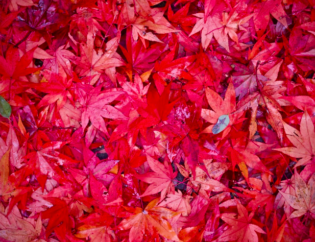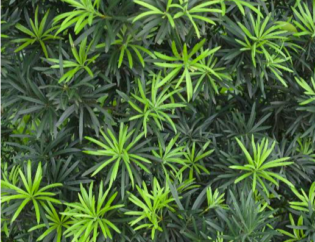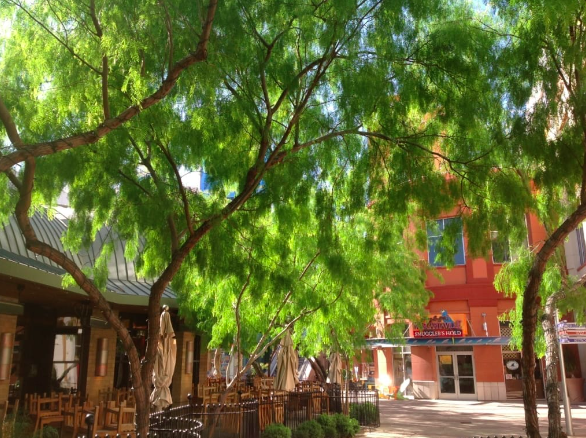
As water use continues to tighten in California, it’s important for us to do our part to plant suitable trees for these conditions. Not only is it beneficial to save water for the environment, but you will also thank yourself when your water bill isn’t high.
We sell a great variety of drought-tolerant trees that can take the Central Valley heat and will become established to less water once mature. Let’s explore the many genera suitable for our area. Dry years do not have to mean ugly gardens!
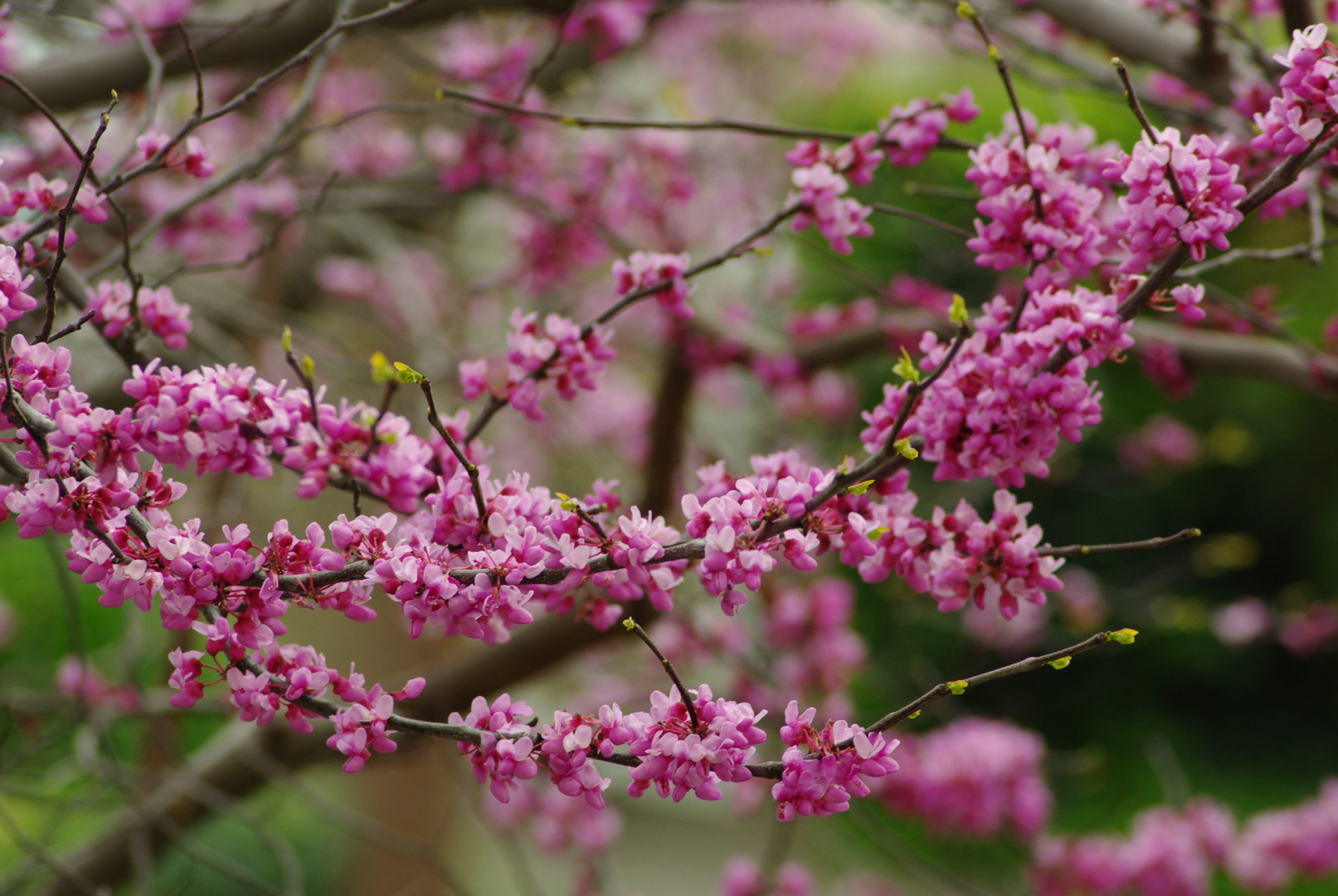
Chilopsis, also named Desert Willow, is native to Southwest desert washes. This habitat is a flat area that is dry for long periods, followed by flash flooding (or heavy rains.) They are fast-growing at first (about 3′ per year) and then eventually slow to develop the branches and bark. Desert Willows will drop their leaves early in fall but hang onto interesting seed pods through the winter.
Chilopsis ‘Bubba’ grows to about 25′ tall and 30′ wide. This cultivar has large, lavender, and purple trumpet-shaped flowers from late spring through summer. ‘Bubba’ was selected for its vertical tree-like form, as many cultivars are more shrub-like.

Chilopsis ‘Timeless Beauty’ is named for the long bloom of two-toned lavender and burgundy flowers. The flowers on this variety are also fragrant! Growing 15-20′ tall and wide, it is an excellent summer specimen tree for the landscape.
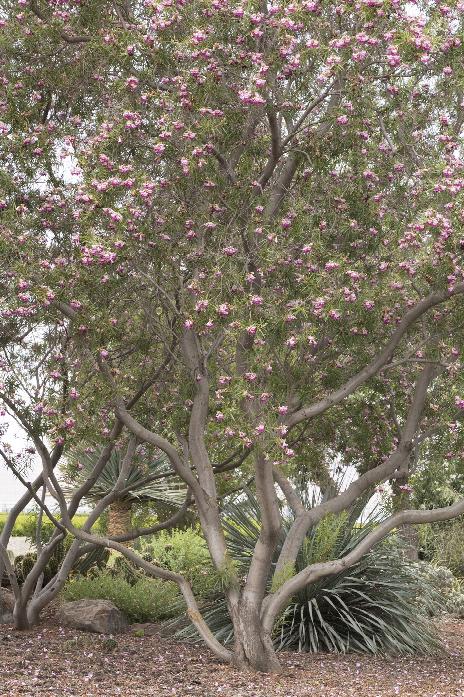
Chilopsis ‘Warren Jones’ was selected from the wild for its large ruffled blossoms. ‘Warren Jones’ grows quicker than other varieties, holds onto the leaves longer, and can be evergreen in warm winter climates. Large ruffled flowers bloom profusely through summer. 25′ tall by 30′ wide.
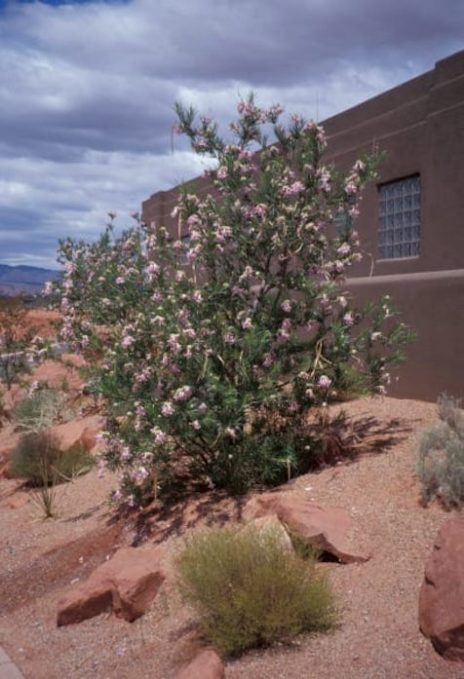
Chilopsis ‘Desert Diva’ is a special selection from Mountain States Wholesale Nursery, which was chosen for the deep, dark purple-burgundy. Fragrant flowers attract many pollinators to the garden. This variety also has emerald green leaves which stand out in contrast to the blossoms. Dense foliage makes this an excellent specimen tree that also offers privacy and shade.
.jpg)
Sophora secundiflora (Texas Mountain Laurel) is a slow growing, long lived tree. Native to Texas and Mexico. Extremely drought tolerant. Blooms in spring with wisteria-like flower clusters that smell like grape soda. Develops thick, tough seed pods that do contain poisonous seeds, however the seed pods are very difficult to break open. Click here for images and more information.
Fraxinus greggi (Gregg’s Ash Tree or Littleleaf Ash) is virtually evergreen. Tiny leaflets on compound leaves create a fine texture. Old leaves drop in spring prior to new growth but doesn’t not lose all it’s leaves at once. Inconspicuous flowers yield winged fruit much like Japanese Maple. Slow to moderate growth is regulated by availability of water but needs well-drained soil. Shrubby in it’s youth and if left unpruned or can be trained into a multi-trunked tree with age. Click here for images and more information.
Parkinsonia ‘Desert Museum’ (Palo Verde) is one of our most popular drought tolerant landscape trees. This is a cultivar of the Southwestern native and the only variety we typically carry. Fine-leaved, open, airy canopy produces masses of bright yellow flowers with bright orange stamens in the hot months of the year. Is deciduous in the winter here in the Central Valley. Fast grower but can yield excessive growth that can cause branches to break or the whole tree to split. Avoid frequent irrigation to prevent this. Click here for images and more information.
Prosopis, or Mesquite Tree, is one of the toughest trees for drought-tolerant gardens because they have a deep root system to search for water.
Prosopis chilensis (Chilean Mesquite) has branches of breezy leaflets with a dense canopy that is great for shade in the summer. Deciduous in cold winter climates. A large tree growing up to 30′ tall by 30′ wide at maturity.
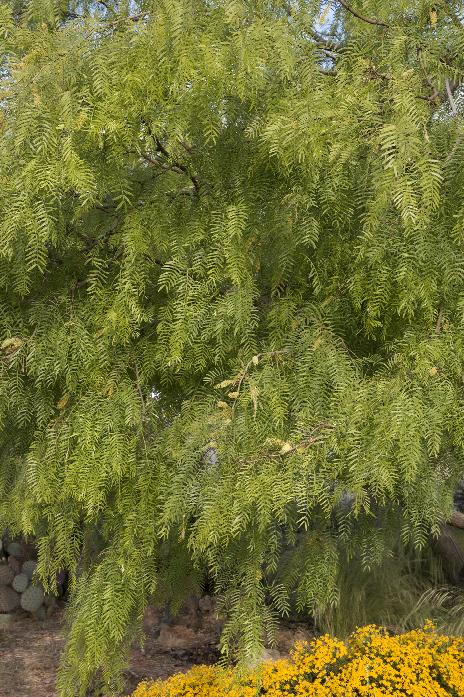
Prosopis ‘Maverick’ (Thornless Texas Honey Mesquite) is a thornless and deciduous variety with droopy branches and lacy foliage similar to a willow. Growing 35′ tall and 35′ wide, this large tree offers plenty of shade in the summertime! In spring, yellow catkins cover the tree after the leaves sprout.

Prosopis ‘Phoenix’ (Thornless South American Mesquite) is a grafted hybrid of Prosopis that is thornless and fast-growing. The spreading habit of this tree casts great shade in the summer. Striking branch structure makes this variety a great focal point in the landscape.

Acacia is a genus of fast-growing trees mostly native to Australia. This genus is commonly recognizable by the fuzzy flowers that cover the tree and green leaflets.
Acacia salicina (Willow Acacia), named for the droopy silhouette similar to Willows, is a spectacular tree to come across in the landscape. The green, narrow leaves give an even more weeping effect. This large tree quickly grows to 40′ tall by 20′ wide.

Acacia willwardiana (Palo Blanco) is named for the textural, white, peeling bark. The fernlike leaves give an airier feel than the Willow Acacia. It is ideal for smaller spaces growing only 20′ tall and 10′ wide.


Eucalyptus papuana (Ghost Gum)is another fast-growing and drought-tolerant tree we like to recommend for minimal leaf litter. A smaller growing Eucalyptus, 45′ tall by 20′ wide, it is a great addition to the hottest climate gardens. This species can take reflected heat and is frost hardy.

Other genera of drought-tolerant trees we recommend for planting include Oaks, Redbuds, and Crape Myrtles. You can read more in our previous blog posts below.




